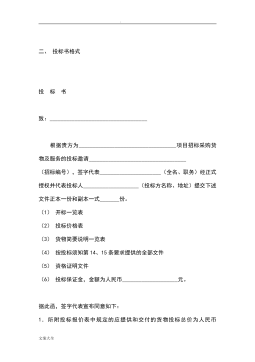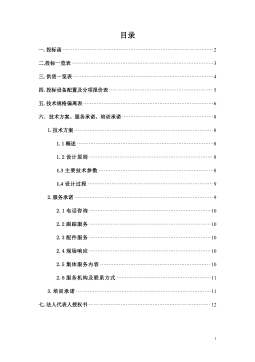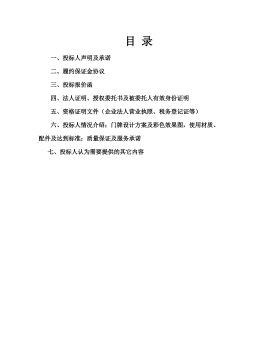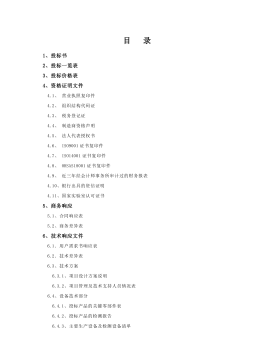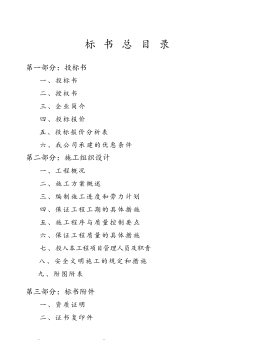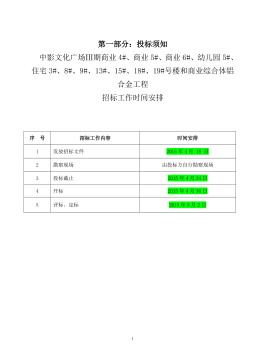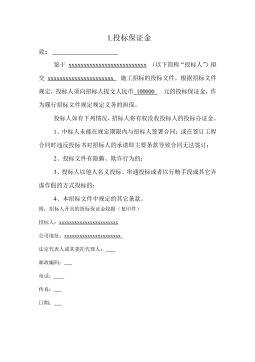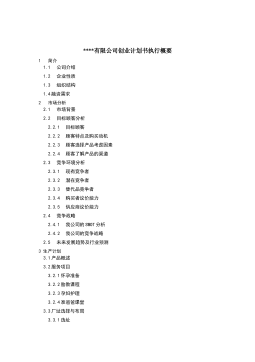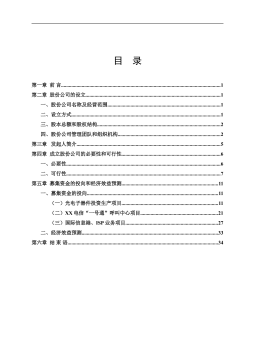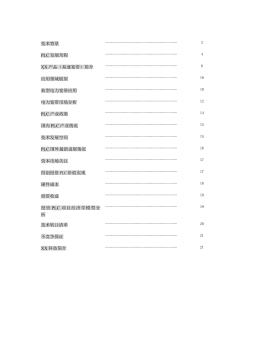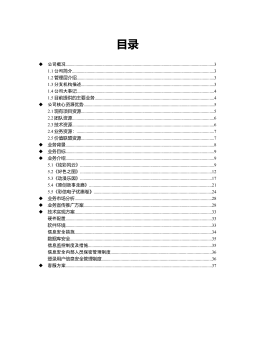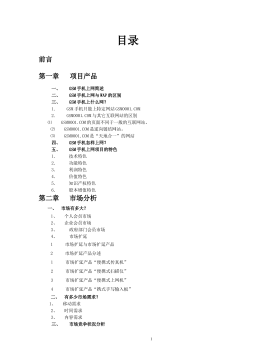关于若干巨磁阻和隧道磁阻传感器特性的研究
VIP免费
摘要
磁阻效应是指材料的电阻随着外部磁场的变化而产生对应改变的现象,磁阻
效应已经广泛引用于传感器产业,其中基于巨磁阻效应和隧道磁阻效应的新型磁
传感器,相较于传统的磁传感器而言,具有灵敏度高,输出信号大,体积小,可
靠性高,功耗低,抗恶劣工业环境等一系列的特点,可用于测量位置,位移,角
度,转速等物理量。本论文旨在对若干巨磁阻和隧道磁阻传感器的特性进行研究,
对获得的一系列实验数据展开讨论。
在研究的第一部分,介绍了磁阻效应的基本理论,详细论述了各异向性磁阻
和巨磁阻效应的原理并利用所搭建的试验装置,对 NVE 公司的 AAL002 巨磁阻传
感器在不同位置,方向,磁场强度大小下的输出进行了毫米和微米级的测量,获
得了不同的输出曲线并对其进行了分析,其结果为进一步的设计研究提供了有效
的数据。
在研究的第二部分,论述了巨磁阻传感器测量角度和位置的原理并利用所搭
建的试验装置,对 NVE 公司的 ABL014 巨磁阻传感器在若干距离下进行了不同角
度的测量,尽管由于装置本身的问题,试验并未得出理想的结果,但仍然验证了
原理的可行性,为未来的试验装置的改进提供了参考依据。
在研究的第三部分,论述了隧道磁阻的原理并利用所搭建的试验装置,对 NVE
公司的 AAT001 隧道磁阻传感器进行了测量,该装置可用来测量电机转动的角度
以及转速。通过对基于原理设计的试验装置分别进行的手动与示波器的测量,验
证了装置的可行性,对所获得的数据进行了分析,探讨了误差产生的原因及类型,
为进一步开发相关新型编码器提供了基础性的研究数据与方法。
关键词: 巨磁阻,隧道磁阻,测量,传感器
Abstract
Magnetoresistance effect has been widely used in the sensor industry. Compared to
the conventional magnetic sensors, new types of magnetic sensors based on giant
magnetoresistance and tunnel magnetoresistance have some characteristics such as
higher sensitivity, larger output signal, small size, high reliability, lower power
consumption, better disturbance resistibility under rugged industrial environments. They
can be used for measuring position, displacement, angle, speed and other physical
quantities. This dissertation is focus on investigating about the characteristics of a
number of giant magnetoresistance and tunnel magnetoresistance sensors and the
measuring data obtained through experiments has been elaborated.
In the first part of the investigation, the related principle has been discussed and the
output of NVE AAL002 giant magnetoresistance sensor has been measured in different
locations, directions and magnetic field strength with experiment setups at millimetre
and micrometre level.
In the second part of the investigation, the related principle has been discussed and
the output of NVE ABL014 giant magnetoresistance sensor has been measured at
different positions with respect to the setup in certain distances
In the third part of the investigation, the related principle has been discussed and the
NVE AAT001 tunnel magnetoresistance sensor has been measured through experiment
setup. The goal for detecting the rotation angle and speed of the motor can be achieved.
The fundamental data and methods for the further development of the new magnetic
encoder have been provided by the following analysis of measurement result.
Keywords: GMR, TMR, measurement, Sensor
Content
摘要
ABSTRACT
Chapter1.......................................................................................................................1
1.1 Introduction........................................................................................................1
1.2 Magnetoresistance..............................................................................................1
1.3 Anisotropic Magnetoresistance (AMR).............................................................2
1.4 Giant Magnetoresistance(GMR)........................................................................2
1.5 AAL002 GMR Sensor........................................................................................4
1.6 Setup (millimetre level)......................................................................................5
1.7 Measurement Results.........................................................................................7
1.7.1 Quadermagnet...........................................................................................7
1.7.2 Pot Magnet................................................................................................9
1.8 Setup (micrometre level)..................................................................................11
1.9 Measurement Results.......................................................................................12
Chapter 2......................................................................................................................15
2.1 ABL014 GMR Sensor......................................................................................15
2.2 Setup................................................................................................................17
2.3 Measurement Results.......................................................................................21
Chapter 3......................................................................................................................22
3.1 Introduction......................................................................................................22
3.2 AAT001 TMR Sensor.......................................................................................23
3.3 Setup.................................................................................................................25
3.4 Measurement Results.......................................................................................29
3.41 Clockwise and Anticlockwise (Manual Measuring)................................29
3.42 Clockwise and Anticlockwise (oscilloscope)...........................................31
3.5 Measurement error discussion..........................................................................35
3.5.1 DC bias error coefficient.........................................................................35
3.5.2 Amplitude error coefficient.....................................................................37
3.5.3 Phase error coefficient.............................................................................37
Summary and Conclusions...........................................................................................39
Reference......................................................................................................................40
Paper and Research......................................................................................................43
Acknowledgements......................................................................................................44
Chapter 1
Chapter 1
1.1 Introduction
Currently, due to the requirements of the novel applications, traditional magnetic
field sensing methods are being revised and often substituted by emerging
technologies[1]. Hall effect sensors are well established in industry, while
magnetoresistive sensors are nowadays continuously gaining supporters. However,
magnetoresistive sensors are, generally, more sensitive than Hall effect based ones,
which can avoid the need of major amplification. Further more, higher scale of
integration can be achieved with magnetoresistance devices.
1.2 Magnetoresistance
The property of magnetoresistance is the ability to alter the path of electrical
currents that are passing through an object by introducing an external magnetic field.
The magnetoresistance ratio is defined as[2]
ΔR/RH = (RH-R0)/RH, (1-1)
where RH is the resistance under magnetic field and R0 is the resistance under
non-magnetic field. The magnetoresistance can be found in classical semiconductors
and, particularlnmagnetic semiconductors. And
RH= RoρB/ρ0[1+m(μB)²], (1-2)
where ρB is the resistivity under magnetic field , ρ0 is the resistivity under
non-magnetic field, and m is the geometric effect factor, μ is the mobility and B is the
magnetic flux density.
Fig. 1.1
Current mode under non-magnetic field Current mode under magnetic field
If magnetic flux (magnetic field) is not applied, the current flows straight through
the InSb plate[3]. However, if magnetic flux is applied, a Lorentz force proportional to
the magnetic flux density will deflects the current path. As the current path is deflected,
1
Investigation on characteristics for some giant magnetoresistance and tunnel magnetoresistance
sensors
the current flows through the plate for a longer distance, causing the resistance to be
increased.
1.3 Anisotropic Magnetoresistance (AMR)
AMR is the property of a material in which a dependence of electrical resistance on
the angle between the direction of electric current and orientation of magnetic field is
observed. The anisotropic term is from its dependence from the angle between the
electrical current and the magnetization direction. The effect is attributed to a larger
probability of spin dependent (s-d) scattering of electrons in the direction of magnetic
field[4].
Mathematical description[5]:
ρ(θ)= ρ0+(ρP-ρ0)cos²θ=ρ0+Δρcos²θ (1-3)
R(θ)= ρ(θ)l/bd= R0+ΔRcos²θ (1-4)
Where M stands for spontaneous magnetization, J stands for current density, θ is the
angle between M and J, ρP is the resistivity for M parallel with J and ρ0 is the resistivity
for M orthogonal with J[6].
Fig. 1.2 Current density and spontaneous magnetization
in a single domain thin film strip
The formula above mentioned indicates that maximums can be attained at angles of
45°In order to achieve this enhancement in the response , this device should be
arranged in a special configuration, where the current is forced to flow in a
direction that is 45° tilted with respect to the magnetic field.
1.4 Giant Magnetoresistance(GMR)
Giant magnetoresistance(GMR) is a quantum mechanical magnetoresistance effect
observed in thin-film structures composed of alternating ferromagnetic and
non-magnetic layers[7]. The GMR sensors utilize the quantum nature of electrons that
have two spin states, up and down. Conducting electrons with spin direction parallel to
the sensor film's magnetic orientation move easily and thus produce low electrical
2
摘要:
展开>>
收起<<
摘要磁阻效应是指材料的电阻随着外部磁场的变化而产生对应改变的现象,磁阻效应已经广泛引用于传感器产业,其中基于巨磁阻效应和隧道磁阻效应的新型磁传感器,相较于传统的磁传感器而言,具有灵敏度高,输出信号大,体积小,可靠性高,功耗低,抗恶劣工业环境等一系列的特点,可用于测量位置,位移,角度,转速等物理量。本论文旨在对若干巨磁阻和隧道磁阻传感器的特性进行研究,对获得的一系列实验数据展开讨论。在研究的第一部分,介绍了磁阻效应的基本理论,详细论述了各异向性磁阻和巨磁阻效应的原理并利用所搭建的试验装置,对NVE公司的AAL002巨磁阻传感器在不同位置,方向,磁场强度大小下的输出进行了毫米和微米级的测量,获得了...
作者:牛悦
分类:高等教育资料
价格:15积分
属性:45 页
大小:2.18MB
格式:PDF
时间:2024-11-19


